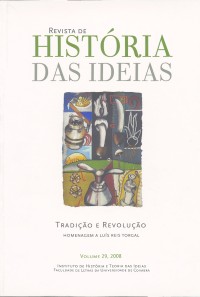Please use this identifier to cite or link to this item:
https://hdl.handle.net/10316.2/41576| Title: | Responder à epidemia: estado e sociedade civil no combate à gripe pneumonica (1918-1919) | Other Titles: | Responding to the epidemic: the state and civil society in the combat against the influenza pandemic (1918-1919) | Authors: | Sousa, Paulo Silveira e Castro, Paula Lima, Maria Luísa Sobral, José Manuel |
Issue Date: | 2008 | Publisher: | Imprensa da Universidade de Coimbra | Abstract: | A pandemia de gripe pneumonica de 1918-1919 foi a mais mortífera de todo o
século XX. Em Portugal difundiu-se em três vagas, de intensidade variável, entre,
sensivelmente, Maio de 1918 e a Primavera de 1919. Se no início tomou formas
quase benignas, a sua virulência, bem como as taxas de mortalidade associadas
foram crescendo, para atingir um pico no Outono de 1918. Nestes curtos meses
a epidemia marcou presença em quase todo o país, provocou um número de
vítimas difícil de comparar com outras epidemias e teve da parte dos médicos
e autoridades sanitárias uma resposta, com frequência, insuficiente. Este artigo
pretende analisar os modos de combate e reacção desenvolvidos pelo Estado e
pela sociedade civil, discutindo assim a construção da esfera pública no Portugal
da I República. Seguiremos o modelo desenvolvido por Jürgen Habermas (1962)
no seu estudo pioneiro sobre as características da esfera pública, procurando
contrastar as respostas à epidemia dadas pelo Estado e pela sociedade civil com as propostas deste autor. As principais dimensões a examinar serão a capacidade
do Estado da época para fazer face a uma epidemia com esta dimensão,
bem como as estratégias seguidas pela sociedade civil. The influenza pandemic of 1918-1919 was the most devastating epidemic of the entire twentieth century. In Portugal it spread out in three waves, between May 1918 and the spring of 1919. It started as a relatively benign phenomenon, but its virulence, as well as the mortality rates, kept increasing, reaching a peak in the autumn of 1918. In less than two short months the epidemic affected the entire country, making an unprecedented number of victims when compared with previous outbreaks of contagious diseases. Traditional public health measures were ineffective in responding to these massive death rates. State organisations and infrastructures could not respond to all these situations and were constrained to call on the cooperation of civil society. At the same time, new trends were visible in the construction of the public sphere in the First Republic of Portugal (1910-1926). Using the model developed by Jürgen Habermas (1962) in his pioneering study on the characteristics of the public sphere, we will look for contrasts in the reactions to the epidemic. We will focus on the capacity of the State to confront an epidemic of this dimension and characteristics, as well as the strategies followed by civil society organisations. |
URI: | https://hdl.handle.net/10316.2/41576 | ISSN: | 0870-0958 2183-8925 (digital) |
DOI: | 10.14195/2183-8925_29_17 | Rights: | open access |
| Appears in Collections: | Revista de História das Ideias |
Files in This Item:
| File | Description | Size | Format | |
|---|---|---|---|---|
| responder_a_epidemia.pdf | 8.88 MB | Adobe PDF |  |
Items in DSpace are protected by copyright, with all rights reserved, unless otherwise indicated.
